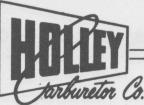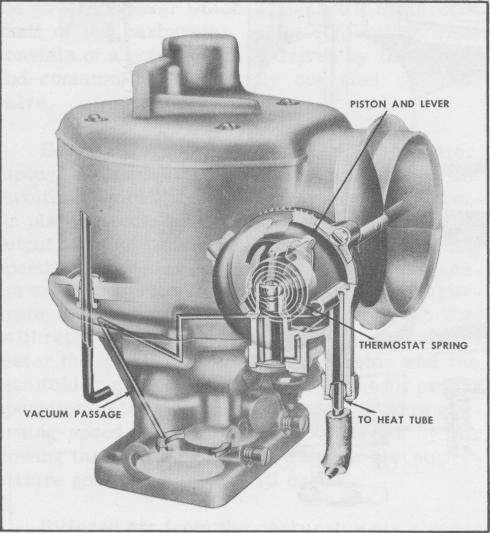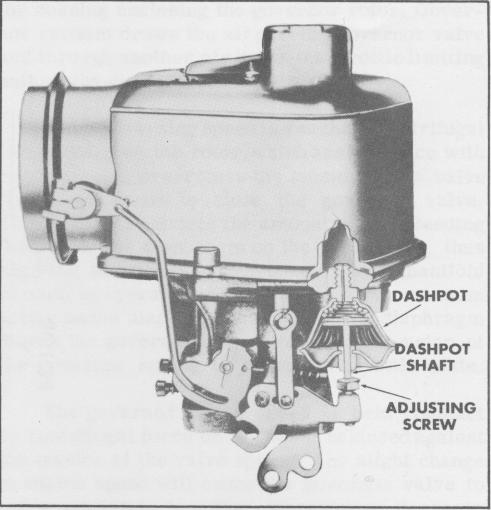
power to run smoothly. As the engine continues to run, the vacuum acting on the choke vacuum piston also draws filtered air from the air horn, through the heat tube in the intake manifold where the air is warmed by the engine heat, and then through the thermostat housing where the air warms the thermostat spring. This gradually decreases the tension of the thermostat spring, permitting the vacuum acting on the choke vacuum piston to open the choke plate further. The air then flows through the vacuum channel which terminates below the throttle plates, where the air re-enters the air stream through the carburetor.
When the engine reaches its normal operating temperature, the thermostat spring no longer exerts a closing tension on the choke plate, allowing the vacuum piston to pull the choke plate to the full open position.
In the full open position the vacuum piston is at the bottom of its cylinder. Slots inthe cylinder wall permit sufficient air to bleed past the piston into the main air stream to allow a continualflow of warm air to pass through the thermostat housing. This keeps the thermostat spring warm and the choke plate fully open until the engine is stopped and allowed to cool.

AUTOMATIC CHOKE

DASHPOT
8. DASHPOT ASSEMBLY
For vehicles equipped with automatic transmission, an anti-stall device as protection against loading the engine when the accelerator is suddenly depressed and released is incorporated. The dashpot retards the closing rate of the accelerator plates as they approach the closed position. This allows the engine to dissipate the raw accelerating fuel discharge into the intake manifold.
When the accelerator is released, the throttle return spring in the accelerator linkage closes the throttle plates simultaneously with the release of the release of the pedal. As the throttle plates approach the closed position, the head of the dashpot adjusting screw in the end of the throttle lever contacts the end of the dashpot diaphragm rod. As the diaphragm rod is pushed in, the diaphragm forces air out the air passage in the dashpot mounting screw, or around stem or units that have valve in diaphragm. Because of the restriction in the tip of this air passage, the inward movement of the diaphragm and disphragm rod is retarded and allows the rod to compress the return spring only slowly. This, in turn, retards the clsoing rate of the throttle plates enough to permit the engine to dissipate the raw fuel and prevent stalling from an over-rich mixture.
When the throttle is again opened, the return spring inside the dashpot returns the diaphragm and diaphragm rod back to its original position ready to operate the next time the throttle is rapidly depressed and released.